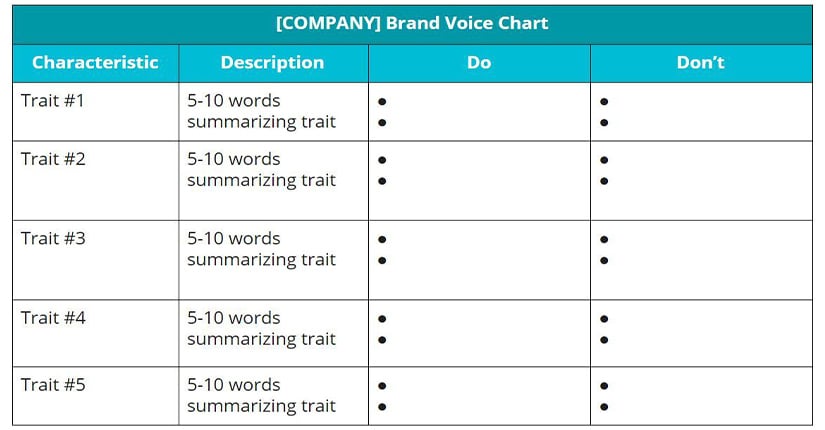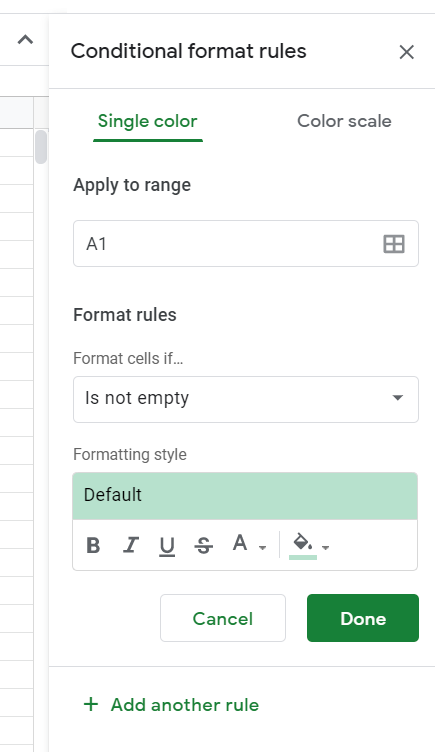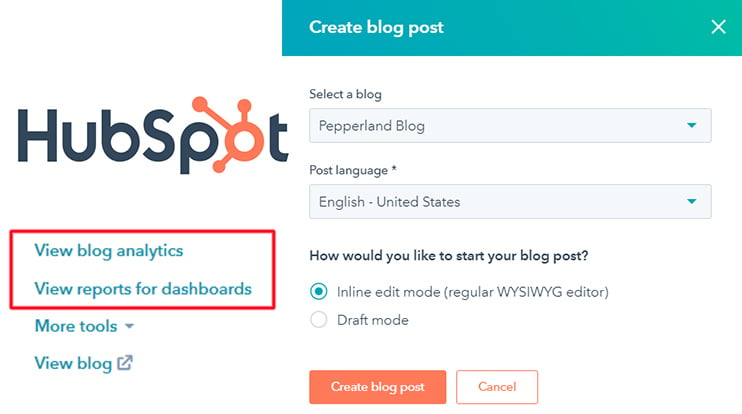Written By:
Will Purcell
Using an editorial calendar to create a social media schedule is one of the best ways to ensure a successful social strategy for your organization. That’s because an editorial calendar:
-
Keeps everyone involved with content creation on the same page
-
Provides a blueprint for future content audits
-
Overlays performance metrics to improve ROI
Marketing teams are constantly searching for new content to help boost their company’s reach. And given the massive impact, influence, and rise of social media in the past decade, it’s no surprise that nearly every organization incorporates a social strategy into their marketing efforts.
The added benefit of social media is that it can be used to promote virtually any form of content that your company generates.
But with so much content to review and organize for your social strategy, it can be challenging to build a schedule that aligns with your overall marketing goals. That’s where an editorial calendar can help.
Why use an editorial calendar?
At its core, an editorial calendar functions as an organizational tool that helps organizations plan for upcoming content and marketing campaigns. It’s important, however, to note that an editorial calendar also serves as a library for all of your content.
This allows marketers, publishers, or anyone involved with content within your organization to have a clear and comprehensive view of:
- What has been published
- What’s currently being created
- What’s scheduled for the future
Ultimately, this helps to keep everyone on the same page with a more transparent and effective line of communication between you—the content creator—other team members, and your shareholders.
While an editorial calendar is most typically used to track content creation, such as blog posts, it can also be an incredibly useful tool for your social media planning.
6 Steps to Create a Social Media Schedule With an Editorial Calendar
For the purpose of this article, we highlight the steps involved in creating a social schedule with an editorial calendar built through Google Sheets. We prefer Google Sheets because it offers a simple, yet effective avenue to collect all pertinent data.
As an added bonus, it can seamlessly be shared with others at the click of a button and it resides in the cloud. This means that multiple people can access and work within a single file without the fear that they are working with an outdated version.
Organize your Social Schedule with our FREE Editorial Calendar Template
1. Define your organization’s brand voice.
Brand voice simply refers to the unique personality that a company exhibits in their marketing materials and communications. This personality is important for your social messaging because it influences virtually every element of your content and communications—both internally and externally.
Defining your brand voice is important, but to achieve success it’s critical that everyone on your team consistently channels that voice when creating content too. Specific tools, such as a brand voice chart, can help by providing a quick point of reference for your content creators and copywriting team.
 (Example of Brand Voice Chart Template creation)
(Example of Brand Voice Chart Template creation)
2. Understand your audience.
The success of your social strategy is heavily dependent on a detailed understanding of your audience. That’s because an audience’s patterns, demographics, and behaviors can, and should dictate virtually every aspect of your messaging.
To that point, when it comes to understanding your audience, the more detail you can provide, the better. It’s likely you’ve heard of buyer personas, so if you’ve already established one (or multiple) for your business, look back on your research to evaluate how that information pertains to social media usage. Some helpful questions to ask when reviewing your persona(s) could include:
- When are my personas most active on social media?
- Are there any accounts or groups they consistently follow?
- Which social media platforms do they use the most?
These questions not only help in identifying your audience, but they also help reveal the frequency of your social messaging as well. For instance, if an audience is typically more active in the morning compared to the evening or afternoon, you’ll want to create a schedule that reflects that activity.
3. Audit your existing content.
The versatility that an editorial calendar provides is one of the many reasons it should be included in any content marketing strategy. For example, an editorial calendar can be used to conduct a content audit.
With all of your content stored in a centralized location, you can easily review and differentiate which pieces of content have, or haven’t been successful. From there, you can prioritize your social media schedule to boost high ranking content even further or close any gaps that may exist.
And by using Google Sheets, you can clearly organize the metrics and materials found in your audit as well. For instance, adding conditional formatting to your spreadsheet can help your team easily identify areas of success or improvements to your strategy.

4. Create a workflow for each piece of content.
An editorial calendar is a great way to maintain organization in the planning stage for social messaging, but when it comes to actually scheduling and publishing content, it can be difficult to keep everyone on the same page.
That’s why it’s so important to have an established workflow in place so that every time a new piece of content is published, everyone else is aware of it. One such workflow might look something like:
- A blog post is published.
- The editorial calendar is updated to reflect this status, including a link to the newly published piece.
- A notification goes out to your internal team (marketing, sales, customer service, etc.) notifying them about the new content.
- The person responsible for social media strategy knows to push their messaging.

Choosing the right CMS can make this whole process a lot easier. While there are many different platforms to choose from, we tend to recommend HubSpot. That’s because it offers a lot of great benefits, like:
- Integration with all major social media platforms
- Analytics and data for each social post
- Monitoring systems to keep track of engagement in real time
- Comparison tools to review comprehensive data from previous posts
Overall, these features can help create a solid workflow that boosts virtually every element of your social media strategy. From there, you can connect with your content creation team to allocate and assign the tasks required to create and develop each social media post.
5. Draft and review social copy.
A great way to ensure you’re drafting strong and relevant social copy is by reviewing your brand voice and brand voice worksheet. That’s because the guidelines outlined in your brand voice keeps messaging unique, yet consistent while ultimately, cultivating a social media presence that:
- Stands out from competition
- Speaks directly to your audience
It’s also helpful to use your editorial calendar as a launching point for social copy. Does it need to include more detail? Or, should you dial back your messaging more? These are just a couple of questions your team could ask when reviewing social copy.
And, by using Google Sheets, comments or questions can be easily added or accessed all within one universal document.
6. Schedule your social posts.
Once social copy has been drafted and reviewed, it’s time to start scheduling your social posts. Schedules typically depend on the frequency of messaging and the number of social media platforms used by your organization.
For companies posting to social media once a day, it might prove easier to schedule content on a bi-monthly or monthly basis whereas companies posting multiple times throughout the day across multiple platforms may need a shorter timeline to schedule out each post.
Ultimately, there’s no “one size fits all” for creating a social media schedule. The key is to develop a plan that’s easy to understand and best aligns with your goals.
After publishing, what comes next?
Once your social media schedule is complete, it’s important to continually look for areas of growth and improvement. This allows your company to remain ahead of the competition and also stay afloat in the face of an ever-changing social media landscape.
To help reevaluate your approach, consider the following factors below:
Update your editorial calendar
It may seem obvious, but without an updated editorial calendar, your social schedule is practically obsolete. Your calendar should reflect any new pieces of content along with any newly updated content as well.
In general, it’s best to update your calendar:
- A least once a week
- Everytime a new piece of content goes live
- After every quarter
- At the conclusion of any campaign
Analyze performance data
Regardless of the results from your most recent content push, there’s always room to grow. Taking the time to critically analyze performance data is important, but it’s equally important to layer those metrics within your editorial calendar as well.
There are plenty of tools to use for analyzing performance data, but some of our favorites include:
- HubSpot’s social media tool
- SEM Rush
- Ahrefs
- Buzz Sumo
Layering these performance metrics into your calendar keeps your strategy optimized because it gives your organization a tangible understanding of how content has performed over time.
Review social messaging with your team
Reviewing social messaging with your team is a great way to brainstorm new topics and keep a fresh, creative perspective for your strategy overall. Remember, the social media landscape is constantly changing.
These changes have also driven a dramatic shift for the way that companies reach customers and generate new leads. For your social strategy to stay updated to best meet the needs of your audience, it’s best to consistently review content internally with your team.
Create a Social Media Calendar for your Organization.
As you can see, an editorial calendar is more than just a simple spreadsheets with columns, rows, and cells. With multiple applications and uses it can provide a blueprint for scheduling, posting, and optimizing content for your organization.
That’s one of the many reasons why creating a social media schedule with an editorial calendar is one of the best ways to optimize your outreach efforts, grow your reach, and increase your ROI overall.
Does your social strategy need a boost? Partnering with inbound marketing specialists can help. An organization that specializes in content marketing or inbound marketing can help your business grow exponentially through their expertise and network of resources.
Contact us to find out how content can help boost your operations and revenue goals.







